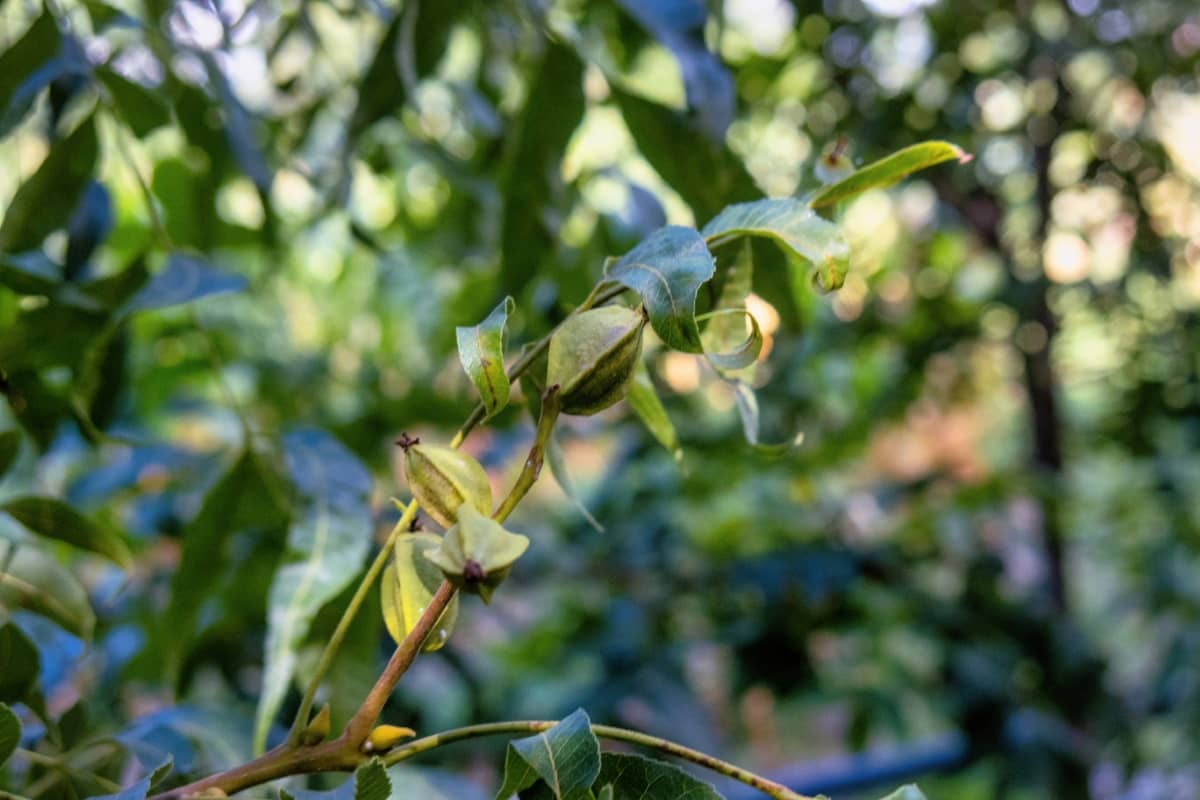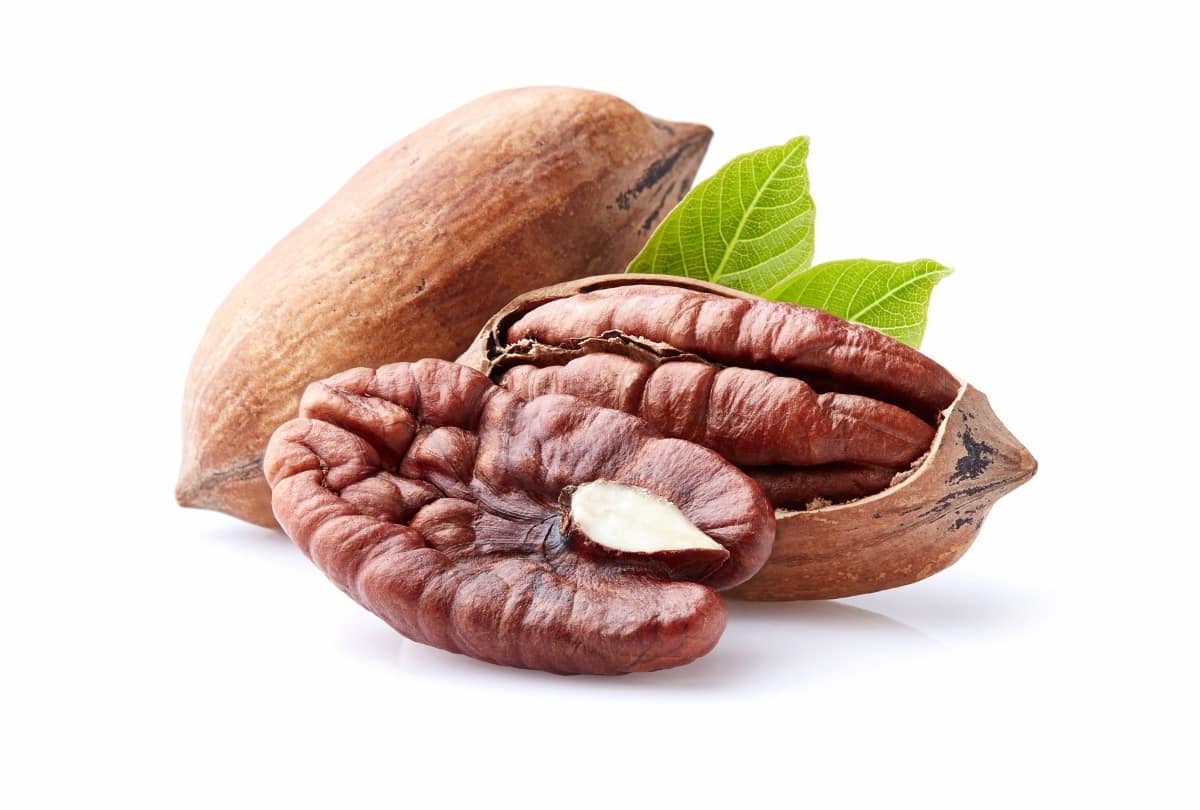The pecan tree, native to North America, is a prized commodity for its delicious and nutritious nuts. How do you pick a pecan, and what’s the best time for this activity? Pecan harvesting is an art and a science, influenced by various factors. How pecan nuts develop, the equipment used in harvesting, and the difference between commercial and manual harvesting methods all play a crucial role.

This article dives deep into the pecan harvesting season, signs of nut ripeness, the influence of environmental conditions, and both traditional and advanced harvesting methods. By the end, you’ll have comprehensive knowledge of how pecans are harvested and the optimal practices to ensure their longevity post-harvest.
When to Pick Pecans and How Pecans are Harvested
Understanding the Pecans Harvesting Season
One of the first steps in the pecan harvesting process is understanding its season. Pecan trees typically start bearing nuts in their sixth year, reaching full maturity by their 15th year. The season usually starts in early fall, around late September or early October, and can stretch to December, depending on the variety and geographical location. Recognizing the start and end of this season is vital to ensuring a high-quality yield.
Signs of Pecans Ripeness: How to Determine the Perfect Time for Harvesting
Determining the perfect time for harvesting is crucial for premium-quality pecans. When the outer green husk begins to split open, revealing the inner shell, it’s an evident sign of ripeness. Another signal is when the nut separates easily from the husk. Color transformation, from green to brown, also indicates maturity. However, simply relying on visual cues might not be foolproof, so understanding other pecan harvesting indicators is beneficial.
Environmental Conditions Impact on Pecans Harvesting
Environmental conditions have a profound impact on pecan development and harvesting. High temperatures and adequate rainfall during the growing season often lead to better pecan development. However, too much rain near the harvesting time can result in moldy or stained nuts. On the other hand, drought can result in underdeveloped and shriveled pecans. Therefore, a balanced environment is crucial for optimal growth and harvesting.
Monitoring Weather Patterns for Optimal Pecan Harvesting
Monitoring weather patterns is a proactive approach to ensure a successful harvest. Sudden temperature drops can accelerate ripening, while prolonged warm periods can delay it. Rainfall patterns should also be monitored, as excess moisture close to the harvest can negatively impact the pecans’ quality. By closely monitoring weather trends, growers can make informed decisions on the ideal harvesting time.
In case you missed it: 9 Causes of Dying Pecan Trees and How to Fix Them?

Assessing Nut Maturity: Key Indicators for Picking Pecans
Apart from visual signs, assessing nut maturity requires a closer look at other indicators. One effective method is the float test, where nuts are submerged in water. Mature nuts will sink while immature ones float. Another approach is the kernel color change, where a bright, golden hue indicates readiness. The texture of the kernel also plays a role; a rubbery texture means it’s not yet ripe, while a crisp one signifies maturity.
Techniques for Testing Pecan Readiness: Shake, Drop, and Visual Inspections
Testing pecan readiness can be a blend of various techniques. The shake method involves shaking the tree and observing the number of nuts that fall. A tree dropping many nuts indicates maturity. The drop test is similar but focuses on the ease of nut drop with gentle nudges. Visual inspections remain crucial, where growers closely observe the outer husk’s changes and the nut’s separation ease from the husk.
Harvesting Methods: Manual Vs. Mechanical Approaches
When considering how to harvest pecans commercially, there are mainly two approaches: manual and mechanical. Manual harvesting involves individuals collecting nuts by hand or using simple tools, which is ideal for smaller orchards. Mechanical harvesting employs pecan harvesting equipment, like shakers and sweepers, to collect the nuts en masse. Each method has its merits and limitations, and the choice often depends on the scale of the orchard and the available resources.
Best Practices for Handpicking Pecans: Tools and Tips for Efficiency
For those opting for manual harvesting, several best practices can maximize efficiency. Utilizing long poles to shake branches gently can expedite the process. Using nets or tarps to catch falling nuts can also speed up collection. Additionally, employing nut gatherers or rollers, which pick up the pecans as they’re rolled on the ground, can save time and reduce back strain.
Machine Harvesting of Pecans: Advantages, Disadvantages, and Considerations
Machine harvesting offers a quick and efficient solution, especially for large-scale operations. The advantages are numerous: speed, uniformity, and reduced manual labor. However, it does come with some disadvantages. The initial investment in machinery can be high, and there’s also the risk of damaging the trees or the nuts if not operated correctly. Therefore, considering this method, one should weigh the benefits against the potential drawbacks and expenses.
In case you missed it: 9 Causes of Dying Almond Trees and How to Fix Them?

Post-Harvest Handling of Pecans: Cleaning, Drying, and Storing Pecans for Longevity
Once harvested, proper post-harvest handling of pecans is essential for ensuring their quality and longevity. Cleaning the nuts from debris, leaves, or dirt is the first step. Following this, drying the pecans is crucial to reduce moisture and prevent mold growth. This can be done using drying racks or forced air systems. Lastly, storing the pecans in a cool, dry place, preferably in airtight containers, will preserve their freshness and taste for an extended period. Proper post-harvest handling ensures that the hard work in the harvesting process culminates in the best possible pecan quality.
Best Time to Pick Picans for Different States in the USA
| State | Best Time to Pick |
| Alabama | October – November |
| Alaska | Not a major producer |
| Arizona | November – December |
| Arkansas | November – December |
| California | November – December |
| Colorado | Not a major producer |
| Connecticut | Not a major producer |
| Delaware | Not a major producer |
| Florida | October – November |
| Georgia | October – November |
| Hawaii | Not a major producer |
| Idaho | Not a major producer |
| Illinois | Not a major producer |
| Indiana | Not a major producer |
| Iowa | Not a major producer |
| Kansas | November – December |
| Kentucky | Not a major producer |
| Louisiana | October – November |
| Maine | Not a major producer |
| Maryland | Not a major producer |
| Massachusetts | Not a major producer |
| Michigan | Not a major producer |
| Minnesota | Not a major producer |
| Mississippi | October – November |
| Missouri | November – December |
| Montana | Not a major producer |
| Nebraska | Not a major producer |
| Nevada | Not a major producer |
| New Hampshire | Not a major producer |
| New Jersey | Not a major producer |
| New Mexico | Late October – November |
| New York | Not a major producer |
| North Carolina | November |
| North Dakota | Not a major producer |
| Ohio | Not a major producer |
| Oklahoma | November – December |
| Oregon | Not a major producer |
| Pennsylvania | Not a major producer |
| Rhode Island | Not a major producer |
| South Carolina | November |
| South Dakota | Not a major producer |
| Tennessee | Not a major producer |
| Texas | Late October – Early December |
| Utah | Not a major producer |
| Vermont | Not a major producer |
| Virginia | Not a major producer |
| Washington | Not a major producer |
| West Virginia | Not a major producer |
| Wisconsin | Not a major producer |
| Wyoming | Not a major producer |
In case you missed it: 9 Causes of Dying Cashew Trees and How to Fix Them?

Conclusion
Harvesting pecans is a meticulous process that requires a deep understanding of the nut’s development stages, environmental factors, and available tools and techniques. Whether opting for manual handpicking methods or using advanced machinery, the goal remains: ensuring the highest quality yield.
- Feed Your Flock for Less: Top 10 Tips to Save on Chicken Feed
- Ultimate Guide to Ossabaw Island Hog: Breeding, Raising, Diet, and Care
- Hatching Answers: The Top 10 Reasons Your Chickens Aren’t Laying Eggs
- Eggs and Economics: Breaking Down the Cost of Raising Backyard Chickens
- Defend Your Greens: Proven Methods to Keep Iguanas Out of Your Garden
- Ultimate Guide to Cinnamon Queen Chicken: A Comprehensive Guide for Beginners
- Ultimate Guide to California Tan Chicken: Breeding, Raising, Diet, Egg-Production and Care
- Ultimate Guide to Marsh Daisy Chicken: Breeding, Raising, Diet, and Care
- 10 Types of Chicken Farming Businesses You Can Start for Profits